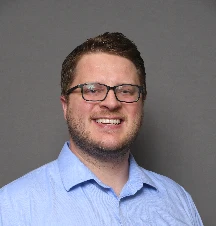3602 - Outcomes for Patients with Primary Thyroid Lymphoma Treated with Radiation Therapy
Presenter(s)

E. P. Damron1, S. Y. Wu1, D. Chihara2, S. O. Tewari3, B. Dabaja1, P. Fang1, T. Lin1, C. C. Pinnix1, A. Martinez Lopez1, J. Xu4, S. Ahmed2, L. E. Malpica Castillo2, A. Chauhan2, F. Furqan2, P. Jain2, H. Lee2, R. Nair2, C. C. Nze2, P. Strati2, and J. R. Gunther1; 1Department of Radiation Oncology, The University of Texas MD Anderson Cancer Center, Houston, TX, 2Department of Lymphoma-Myeloma, Division of Cancer Medicine, The University of Texas MD Anderson Cancer Center, Houston, TX, 3Department of Nuclear Medicine, Division of Diagnostic Imaging, The University of Texas MD Anderson Cancer Center, Houston, TX, 4Department of Pathology and Laboratory Medicine, Division of Hematopathology, The University of Texas MD Anderson Cancer Center, Houston, TX
Purpose/Objective(s):
Primary thyroid lymphoma (PTL) is rare and often treated with surgery, systemic therapy (ST), and/or radiation therapy (RT). Patients (pts) may have persistent PETCT avidity due to thyroiditis, complicating response assessment.Materials/Methods:
We retrospectively reviewed pts with PTL treated with consolidative RT (cRT) or definitive RT (dRT) at our institution from 2004–2024. We defined complete response (CR) as a five-point score (FPS) of 1–3 on PETCT.Results:
Of 25 included pts, median age at RT was 64 years (range (r): 39–83). 17 pts (68%) were female. 15 pts (60%) had high grade lymphoma (HGL; 14 diffuse large B cell, 1 high grade follicular) and 10 (40%) had low grade lymphoma (LGL; extranodal marginal zone). Patients had stage IE (13, 52%), IIE (8, 32%), or IVE (4, 16%) disease. At diagnosis, 20 pts (80%) had thyroid dysfunction. 19 pts (76%) required thyroid hormone replacement (TR) prior to (16, 64%) or at diagnosis (3, 12%). 9 pts (36%; 6 HGL, 3 LGL) underwent thyroidectomy (7 total, 2 partial). 12 pts (48%) had lymphocytic thyroiditis on initial biopsy. Of 24 pts (96%) with PETCT at diagnosis, 22 (92%) had avid disease (median SUV 28.4, r: 3.7–51.1) and 12 (50%) had thyroiditis-related uptake. 2 pts had total thyroidectomy and no avid disease. All 10 LGL and 1 HGL pt underwent dRT (median dose 24 Gy, r: 4–40). 14 HGL pts (93%) had ST and were in CR prior to cRT (median dose 30.6 Gy, r: 30–41.4). Most pts (78%) received R-CHOP (median 6 cycles, r: 3–7) for ST. Of 23 pts with follow-up (median time 75 months, IQR 38–85) after RT, 21 (91%) had CR within RT field, 2 (9%) had partial response (PR), and 2 (9%) are pending follow-up (see Table). The two LGL pts with PR initially received 4 Gy and had CR with an additional 20–24 Gy. One HGL pt relapsed in and out of field 13 months after RT. The 5-year LC, PFS, and OS was 90% (95% CI 66–98%), 85% (59–95%), and 80% (54–92%), respectively. Of 15 pts with post RT PETCT, 10 (66%) demonstrated thyroiditis-related avidity (median max SUV: 8.2, r: 2.7–15), but only 2 pts had residual biopsy-confirmed disease (Table). 17 pts (68%) had acute Grade 1 (12, 71%) and Grade 2-3 (6, 29%) toxicity. Late toxicities included grade 1 xerostomia (2, 8%) and new thyroid dysfunction (1, 4%). 11/19 pts (58%) required a TR dose increase following RT.Conclusion:
Pts with PTL had excellent outcomes after ST and cRT for HGL or dRT for LGL. For LGL, lower dose response-adapted RT may suffice; however, PETCT imaging response evaluations are complicated by thyroiditis. Other than thyroid dysfunction, long term toxicity from RT is rare. Abstract 3602 - Table 1| Timing | Image Findings (n, %) | cRT (n=14) | dRT (n=11) |
| Pre-ST | PETCT Active Disease Thyroiditis Disease and Thyroiditis | 13 (93%) 12 (92%) 9 (69%) 9 (69%) | 11 (100%) 10 (91%) 5 (45%) 4 (36%) |
| Post-ST | PETCT Active Disease Thyroiditis Disease and Thyroiditis | 14 (100%) 0 11 (79%) 0 | - - - - |
| Post-RT | PETCT Active Disease Thyroiditis Disease and Thyroiditis | 9 (64%) 0 6 (66%) 0 | 6 (54%) 1 (16%) 4 (66%) 1 (16%) |
